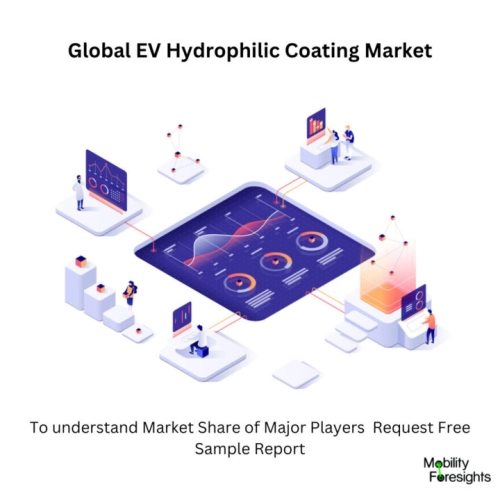
- Get in Touch with Us

Last Updated: Apr 25, 2025 | Study Period: 2023-2030
The EV Hydrophilic coatings are a wettable, low-friction biological and mechanical design that have evolved over the last four decades.
Currently, hydrophilic coatings can be the difference between a purposeful and nonfunctional device, especially in the medical field. With the use of hydrophilic coatings, consistent medical device surface properties and technologies can be achieved.
Prior to the use of these commonly used hydrophilic coatings, the medical community often used coatings such as glycerin, silicone oils and even olive oil to lubricate devices and other instruments.
These coatings, along with attempts to use fluoropolymers such as PTFE, were met with limited success as they often made the lubrication difficult to control and often separated from the equipment after insertion.
Over time, application methods and the bonding process between devices and hydrophilic coatings were improved. In addition, the speed of manufacturing also increased which helped to drive down the costs of hydrophilic coatings and make them more accessible.
Today, there is a wide availability of both natural and synthetic hydrophilic coatings, where the choice is determined by the functional requirements of the device.
A hydrophilic coating creates a polarized, high energy surface that attracts water to the surface. Continuous diffusion of water across the surface occurs, improving the surface cooling. As the water is pulled to the surface it also creates a âself-cleaningâ effect on coils.

The Global EV Hydrophilic coating market accounted for $XX Billion in 2022 and is anticipated to reach $XX Billion by 2030, registering a CAGR of XX% from 2023 to 2030.
Aculon Hydrophilic Coating TechnologyThe patented hydrophilic nano-coating treatments improve performance of virtually any product via easy-to-apply hydrophilic nano-coatings that can bond with a wide array of surfaces.
Aculon has a variety of surface coating technologies capable of functionalizing numerous substrate types to be hydrophilic.
Aculonâs hydrophilic coatings and treatments are highly water attracting offering numerous performance benefits. In addition these hydrophilic coatings are ultra thin (nanoscale), optically clear and quite durable. There are numerous performance advantages to having a hydrophilic surface on countless applications.
| Sl no | Topic |
| 1 | Market Segmentation |
| 2 | Scope of the report |
| 3 | Abbreviations |
| 4 | Research Methodology |
| 5 | Executive Summary |
| 6 | Introduction |
| 7 | Insights from Industry stakeholders |
| 8 | Cost breakdown of Product by sub-components and average profit margin |
| 9 | Disruptive innovation in the Industry |
| 10 | Technology trends in the Industry |
| 11 | Consumer trends in the industry |
| 12 | Recent Production Milestones |
| 13 | Component Manufacturing in US, EU and China |
| 14 | COVID-19 impact on overall market |
| 15 | COVID-19 impact on Production of components |
| 16 | COVID-19 impact on Point of sale |
| 17 | Market Segmentation, Dynamics and Forecast by Geography, 2023-2030 |
| 18 | Market Segmentation, Dynamics and Forecast by Product Type, 2023-2030 |
| 19 | Market Segmentation, Dynamics and Forecast by Application, 2023-2030 |
| 20 | Market Segmentation, Dynamics and Forecast by End use, 2023-2030 |
| 21 | Product installation rate by OEM, 2023 |
| 22 | Incline/Decline in Average B-2-B selling price in past 5 years |
| 23 | Competition from substitute products |
| 24 | Gross margin and average profitability of suppliers |
| 25 | New product development in past 12 months |
| 26 | M&A in past 12 months |
| 27 | Growth strategy of leading players |
| 28 | Market share of vendors, 2023 |
| 29 | Company Profiles |
| 30 | Unmet needs and opportunity for new suppliers |
| 31 | Conclusion |
| 32 | Appendix |